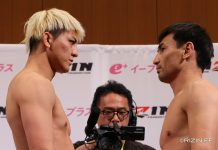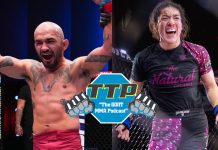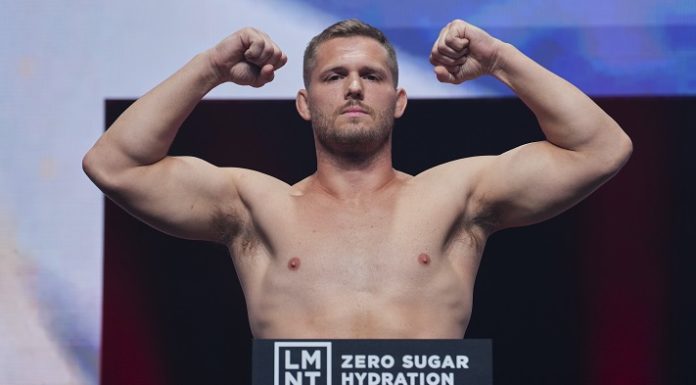
The UFC’s new-look anti-doping program is set to launch in just a matter of days, and in advance of that December 31, 2023 kick-off date, the promotion has released more details about the program.
With USADA (the U.S. Anti-Doping Agency) and the UFC parting ways in a very public break-up, it will now be Drug Free Sport, an agency who also works with Major League Baseball and the NFL, among other organizations, handling sample collection for the promotion. Drug test samples submitted by UFC fighters will then be tested by the World Anti-Doping Agency (WADA)-accredited Sports Medicine and Research Testing Laboratory (SMRTL) in Salt Lake, City, Utah.
Administration of the program, and sanctions, will be dealt with by Combat Sports Anti-Doping (CSAD), and its president, George Piro. Piro, a former FBI agent, is best known as the lead interrogator of toppled Iraqi dictator Saddam Hussein, prior to his execution.
News of the lab’s involvement, as well as Piro’s and the Drug Free Sport partnership was previously announced, but Thursday’s news sheds more insight into what will, and won’t, be prohibited for use by UFC fighters.
Removed from the naughty list, marijuana. The recreational drug, now legal in multiple states as well as Canada, has been fully eliminated from the UFC Anti-Doping program’s prohibited list.
“The criteria for prohibited substances will be modeled after WADA’s In and Out of Competition programs with modifications based on historical findings (i.e. marijuana removed from the prohibited list),” Thursday’s statement read. “In addition, Decision Concentration Limits (thresholds) will be established that allow the program to differentiate between intentional use cases of prohibited substances and cases stemming from unintentional exposure to low level contaminants.”
Under the USADA system, THC (the active component of marijuana) levels had been lowered, but the substance was still tested for. Additionally, local athletic commissions can and likely will continue to test for the drug, with levels varying state to state.
Per the UFC’s anti-doping online portal, a number of other substances are also allowed in competition (note that many of these were likely permissible to use under USADA as well). Among them, the largest list comes in the stimulant category: Bupropion, caffeine, nicotine, phenylephrine, phenylpropanolamine, pipradrol, synephrine, clonidine, and imidazoline derivatives for dermatological, nasal or ophthalmic use (e.g. brimonidine, clonazoline, fenoxazoline, indanazoline, naphazoline, oxymetazoline, tetryzoline, tramazoline, xylometazoline).
Notably, the following modification to the WADA technical specifications have been made under the UFC’s new anti-doping policy. In regards to “Decision Concentration Levels,”
“Adverse Analytical Findings (AAFs) reported at an estimated concentration below the following Decision Concentration Levels (“DCL”), as reported by a WADA-accredited Laboratory or UFC designated Laboratory, shall be managed by the Independent Administrator as Atypi-cal Findings under Article 7.1.9 of the UFC ADP:
- Clomiphene/clomifene: 0.10 ng/mL
- Dehydrochloromethyltestosterone (DHCMT) long-term metabolite (M3): 0.10 ng/mL
- Selective Androgen Receptor Modulators (SARMs): 0.10 ng/mL
- GW-1516 (GW-501516): 0.10 ng/mL
- Epitrenbolone (Trenbolone metabolite): 0.20 ng/mL”
As with the USADA-administered anti-doping program the UFC previously employed, athletes will be required to submit their whereabouts, quarterly. Locations where an athlete is staying each night must be made available; three whereabouts failures in a rolling 12-month calendar “may result in an anti-doping policy violation (“ADPV”) under Article 2.4 of the UFC ADP,” per the policy.
Also, as with the USADA program, therapeutic use exemptions exist and can be petitioned for on a case-by-case basis. This process will be handled by an independent administrator. TUEs will now require 21 day notice prior to the athlete’s intended use of the substance, or “As soon as practicable when the Athlete is scheduled to participate in a Bout with less than ninety (90) days advance notice.”
“This latest UFC Anti-Doping Program is the result of our continued efforts to protect the athletes who compete in the Octagon,” stated Jeff Novitzky, UFC Senior Vice President of Athlete Health and Performance, quoted in Thursday’s announcement. “This new program is the result of years of input and trial and error taken by UFC, our athletes, and third parties who have assisted UFC in operating the program. The anti-doping policy is a living and breathing document that will continue to evolve and adapt when clear science supports changes that can further protect UFC athletes who compete in UFC.”






















